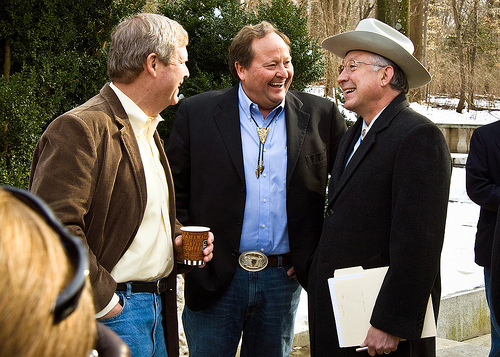Hunters, fishers and all wildlife enthusiasts – there’s a new USDA and Department of Interior council that is going to make the great outdoors even greater for you.
Agriculture Secretary Tom Vilsack and Secretary of the Interior Ken Salazar have announced the new Wildlife and Hunting Heritage Conservation Council that will advise government on wildlife conservation and hunting issues. The Secretaries were joined by Governor Brian Schweitzer of Montana for the announcement at the Theodore Roosevelt Island national memorial in Washington, D.C.
Sparked by the spirit Theodore Roosevelt, the new council focuses on the importance of hunting and fishing in American life and their connections to healthy lands and native species.
The new council replaces the Sporting Conservation Council, bringing in members from the hunting and shooting sports industries and representatives of the nation’s major hunting organizations.
The council will provide a forum for sports men and women to advise the Federal government on wildlife and habitat conservation. New opportunities partnerships will abound as the council brings together the public, the sporting conservation community, the shooting and hunting sports industry, wildlife conservation organizations, the States, Native American tribes, and the Federal government.
USDA’s Natural Resource Conservation Service, Farm Service Agency and Forest Service and the Department of Interior’s U.S. Fish & Wildlife Service and Bureau of Land Management will provide support and guidance to the council.
 Agriculture Secretary Tom Vilsack (left), Montana Governor Brian Schweitzer (center) and Interior Secretary Ken Salazar, share a light moment before the announcement of the creation of the Wildlife and Hunting Heritage Conservation Council a new cooperative Federal advisory council on wildlife conservation and hunting Issues. The Advisory Council will provide advice to the government on wildlife conservation and hunting issues and promote efforts to preserve America’s hunting heritage for future generations. The event took place in Washington, D.C. on February 4, 2010.
Agriculture Secretary Tom Vilsack (left), Montana Governor Brian Schweitzer (center) and Interior Secretary Ken Salazar, share a light moment before the announcement of the creation of the Wildlife and Hunting Heritage Conservation Council a new cooperative Federal advisory council on wildlife conservation and hunting Issues. The Advisory Council will provide advice to the government on wildlife conservation and hunting issues and promote efforts to preserve America’s hunting heritage for future generations. The event took place in Washington, D.C. on February 4, 2010.

From left: Tom Strickland, Chief of Staff and Assistant Secretary for Fish, Wildlife and Parks, Department of Interior, Interior Secretary Ken Salazar, Agriculture Secretary Tom Vilsack and Montana Governor Brian Schweitzer sign the proclamation creating the Wildlife and Hunting Heritage Conservation Council a new Federal advisory council on wildlife conservation and hunting Issues on Theodore Roosevelt Island National Monument in the Potomac River in Washington, D.C., on February 4, 2010.
Submitted by Brad Fisher, Public Affairs Specialist, Natural Resources Conservation Service, Washington,





